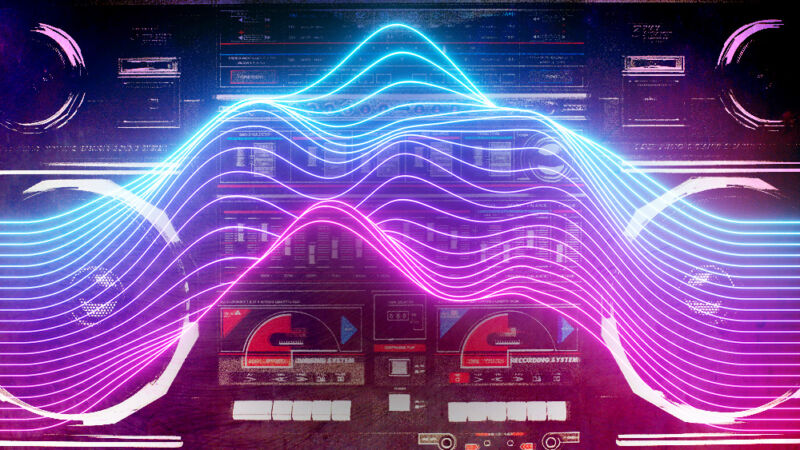The beauty of these projects comes as much from sonic textures as from elegant code.

Musicians have spent centuries flirting with technology to push the boundaries of the art, from the Theremin to mid-century tape experiments. Despite this fascination, only a tiny niche have gone so far as to programmatically generate music via code. In a span of roughly 70 years, the few who’ve done so comprise a Venn diagram of intersecting programmers and avant-garde musicians.
The results are unlike anything you’ve ever heard—and some of the most ambitious music to blend the realms of analog and digital sound.
I talked with people who are using code to make a wide variety of music, from sample mangling to a live algorithmic radio show to preaching the Marxist qualities of open source software. Despite the technological complexity and deep algebra involved, they are all seeking something very simple: a creative sandbox unbound by conventions of time and theory.
“A way of thinking suggested by the program”
Carl Stone has been mangling samples (“mangle” being an agreed-upon verb among sound manipulators) since 1973. He borrows them from commercial music, tears them apart, and glues them back together in nonsensical ways, with results resembling everything from a pop song played backwards to rapid gunfire made from a human voice. So, it was no surprise to me when I discovered (after a sonic onslaught of a February 2020 show where elderly people plugged their ears) that he exclusively uses Max, a beloved programming language for music and multimedia. It’s a visual workspace with musical commands presented as modular boxes that you can chain with virtual wires. The open-ended design allows for free-flowing experimentation.
“You start each coding experience with a completely blank slate,” Stone says. “It’s unlike any of the other commercial programs that have preconceptions and optimizations built in. A program like [Ableton] Live—which I respect very much—tends toward a way of thinking that’s suggested by the program itself.”
Without that framework, Stone’s compositions are overtly surreal. He likens his sample-based work to an anagram: “It has a semblance of semantic meaning, but it’s strange.”
A Los Angeles native and CalArts graduate with little coding background, the 67-year-old has been making music on computers since 1986. He worked with ’80s algorithmic music software such as Jam Factory and Laurie Spiegel’s influential Music Mouse. He describes his ‘80s computers as “luggable” for the road, and he toured with a Macintosh SE/30 for years.
Don’t copy that floppy?
Carl Stone, performing live in the early 1990s with an Apple Macintosh SE/30. Ed Colver
Carl Stone’s typical on-screen arrangement of a Max patch. As he describes it via email: “The photo is of a performance setup of indium modules with specific functions (e.g. load a buffer and cut it up, perform an FFT function, play a sound file, take an external input, mix, etc.).” Carl Stone
Stone discovered Max (named after computer music pioneer Max Mathews) in 1989 during an artist residency in Japan, when his friend slipped him a pirated version on a floppy disk. At this point, Max could only send out MIDI info and couldn’t handle signal processing. Stone began performing with it, frequently collaborating with Japanese video artists, dancers, and musicians.
He’s witnessed the software transform over the years: Signal processing and visual processing were later incorporated. The software got hackey-sacked between different corporations, with Stone formally beta testing its development at various stages. Eventually, one of its developers founded a company to sell it, Cycling ’74. An outside party used Max to breadboard the wildly popular music software Ableton Live. The two programs eventually integrated, and soon after, Ableton absorbed Cycling ‘74 altogether.
Predictably, Stone has resisted the linear temptations of Ableton integration, and his recent output is more radical than his work from 30 years ago (one of his newer songs sounds a lot like the electronic subgenre vaporwave, but he says he has never heard of such a concept). He performs with an iPad and laptop, wearing a felt hat and using OSC (Open Sound Control) to send control data to his Max patches. He’s lived in Japan full-time since 2001, teaching at Chukyo University; he’s spent his quarantine in Los Angeles, though, teaching Zoom classes to Japanese students at 2am local time.
His newest album, Stolen Car (an anagram of his name), was released on September 25.
By Catherine Sinow

